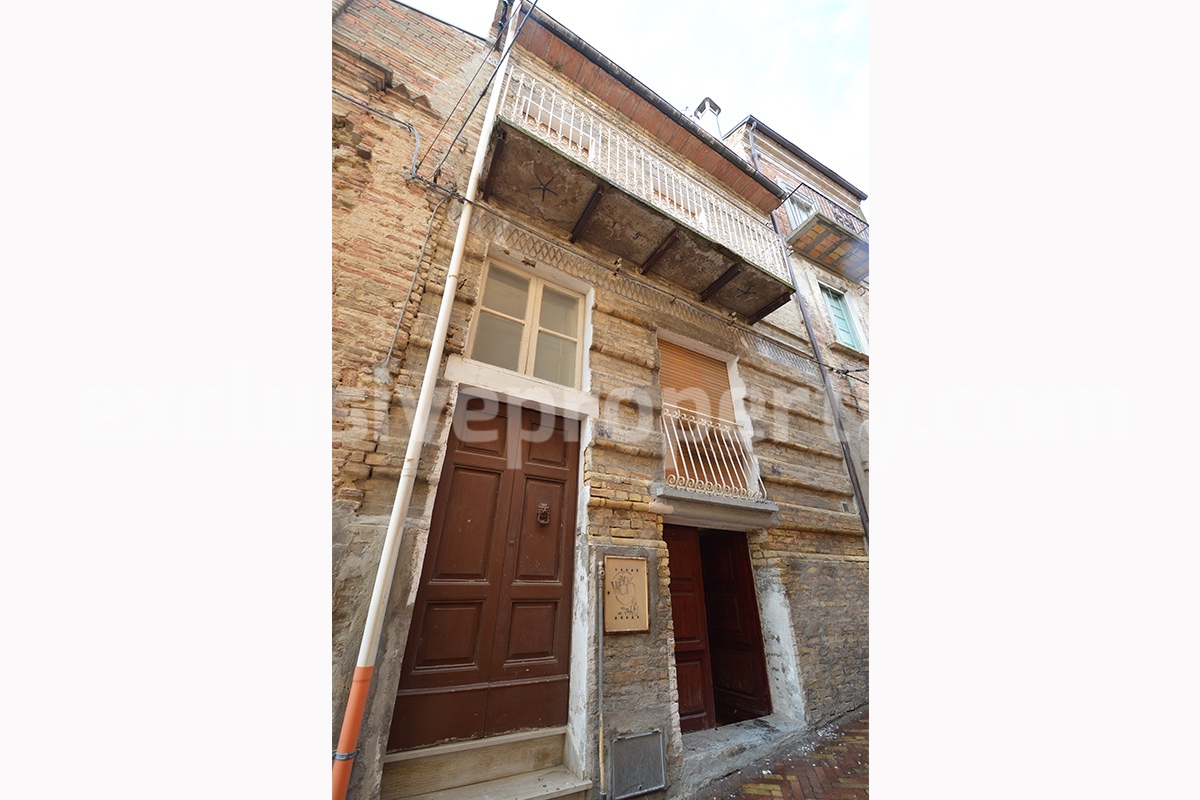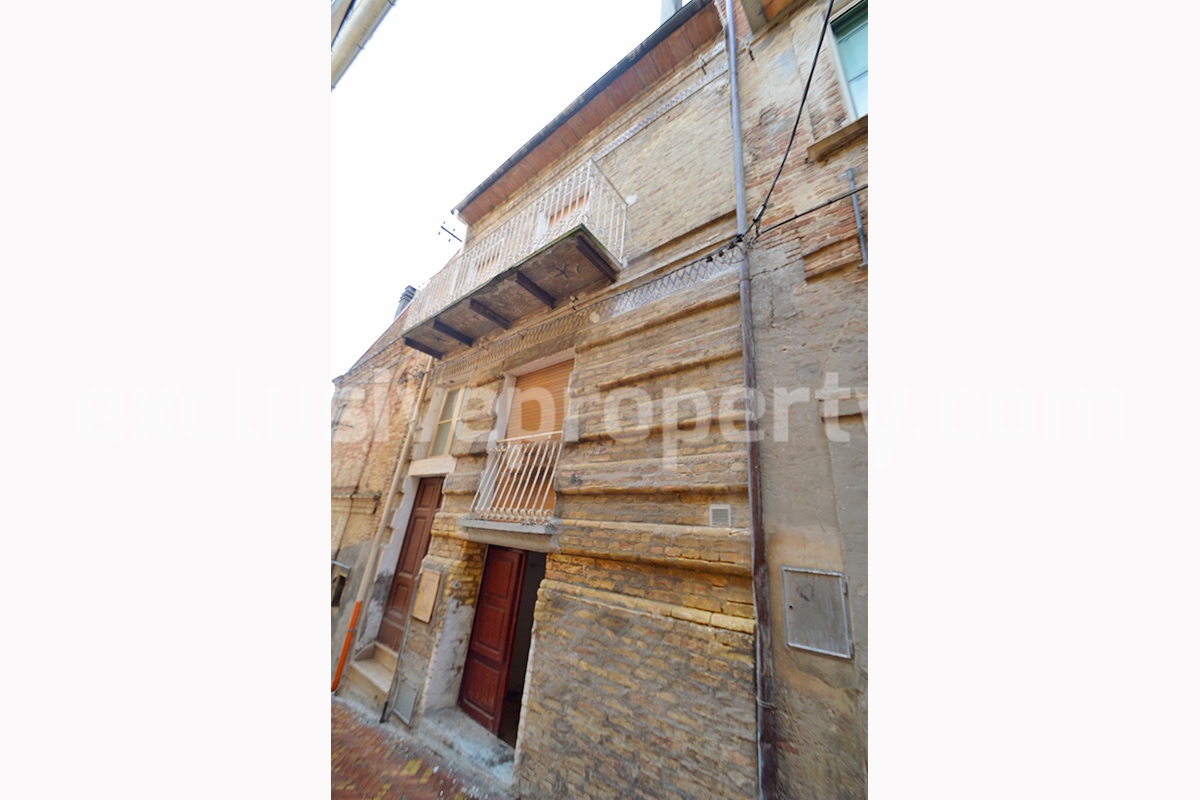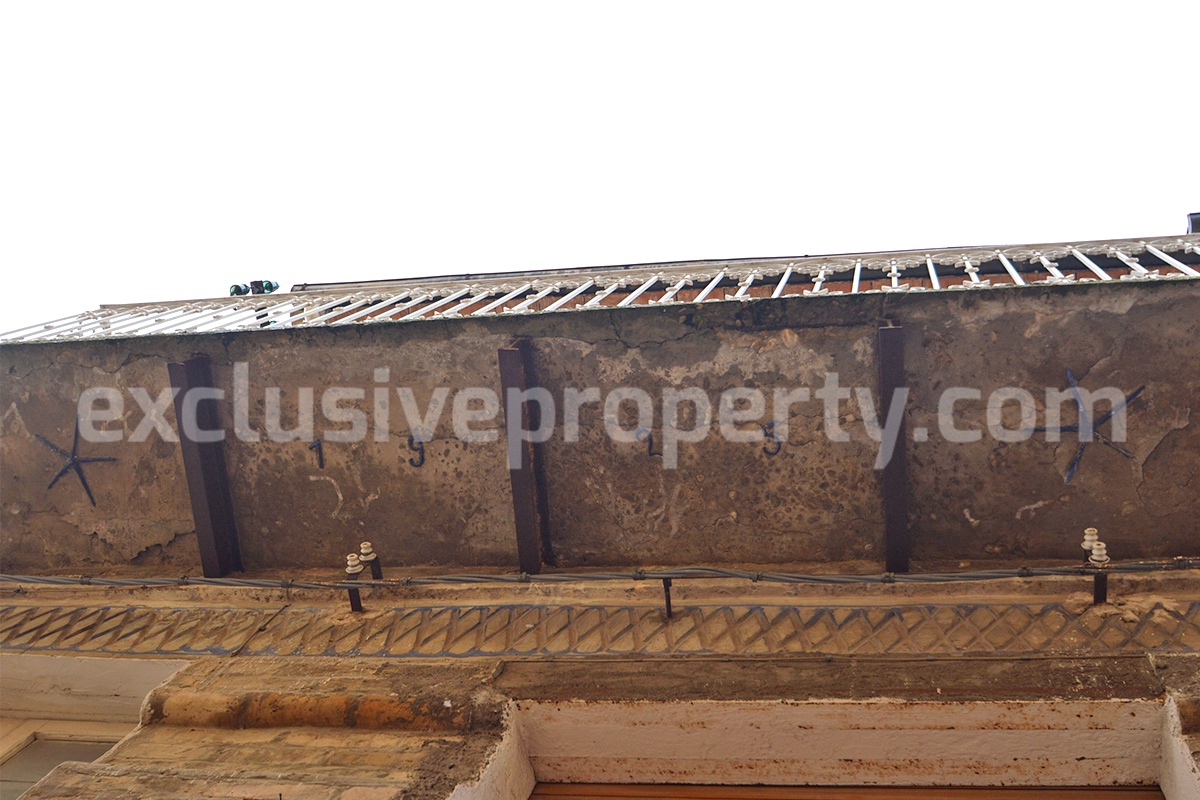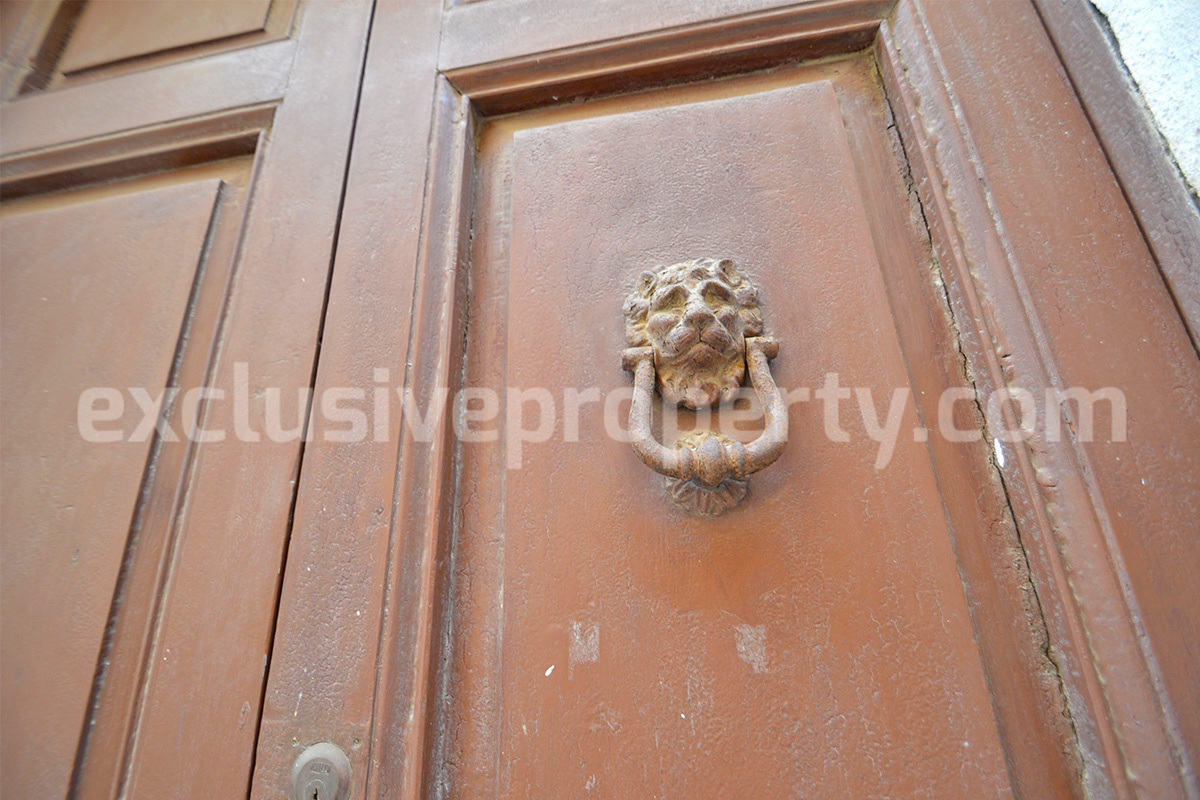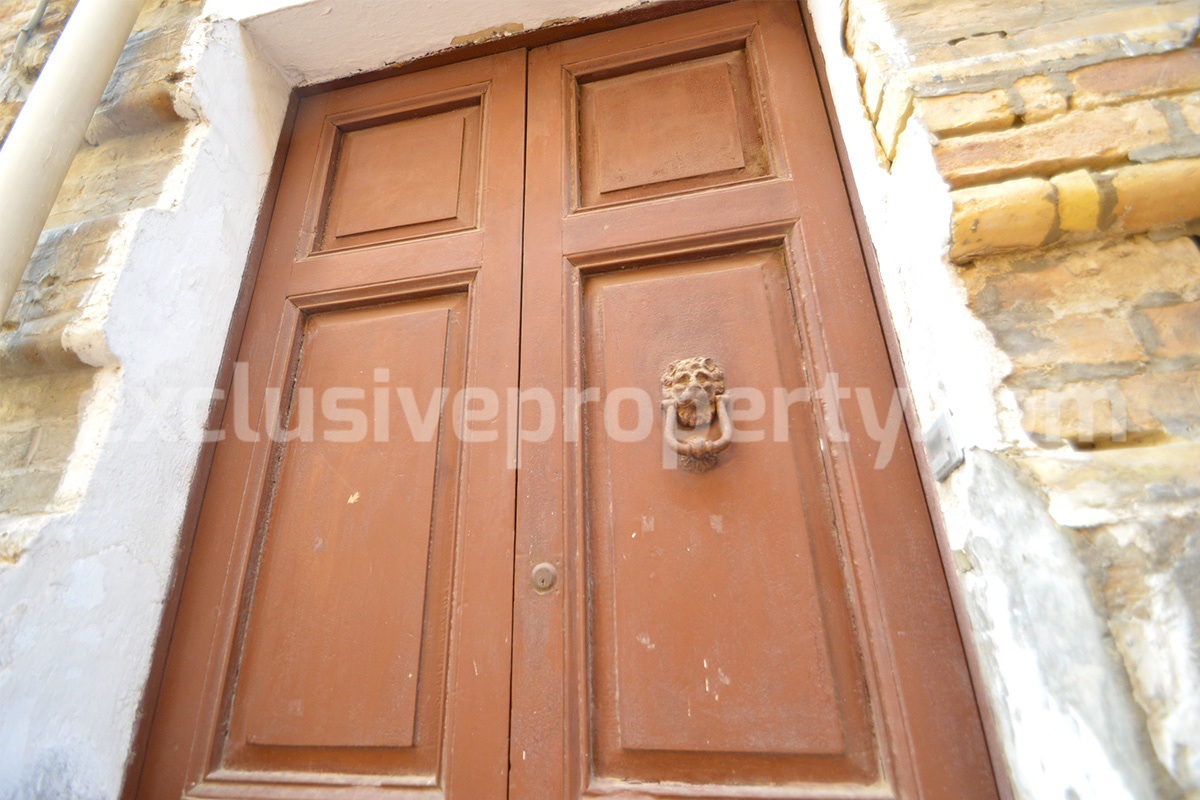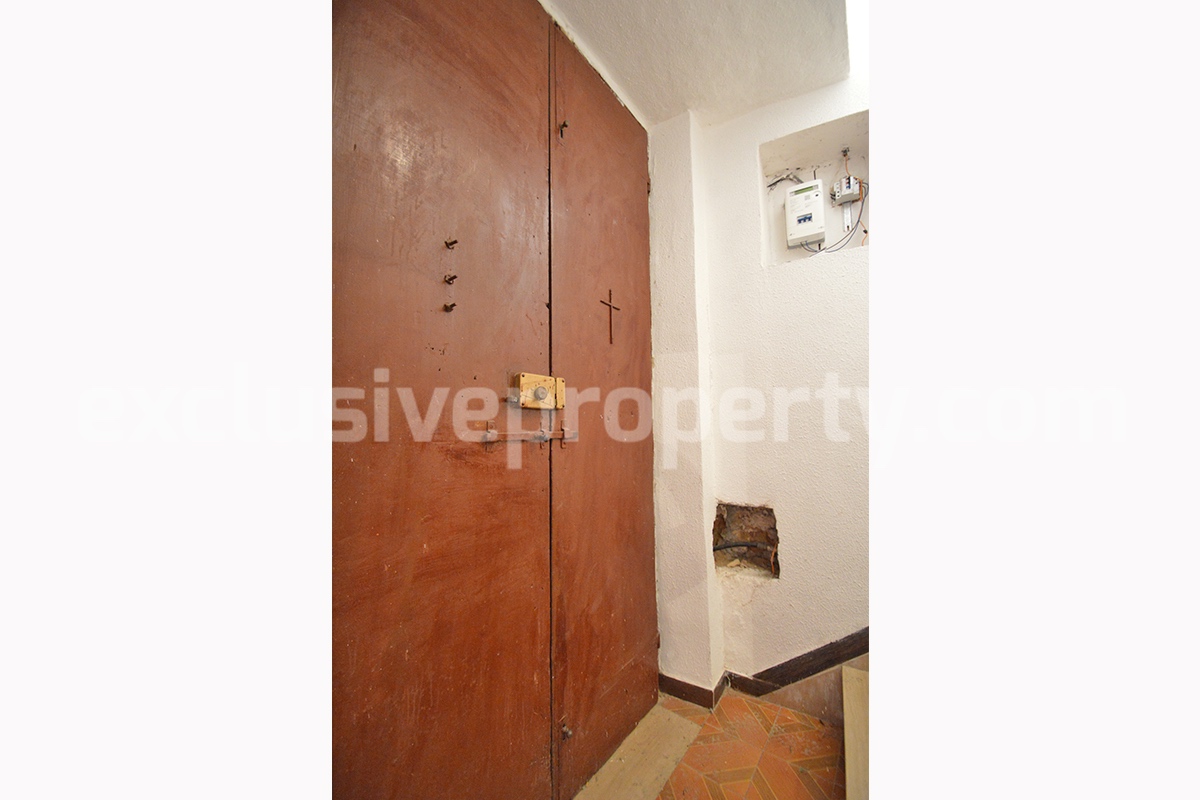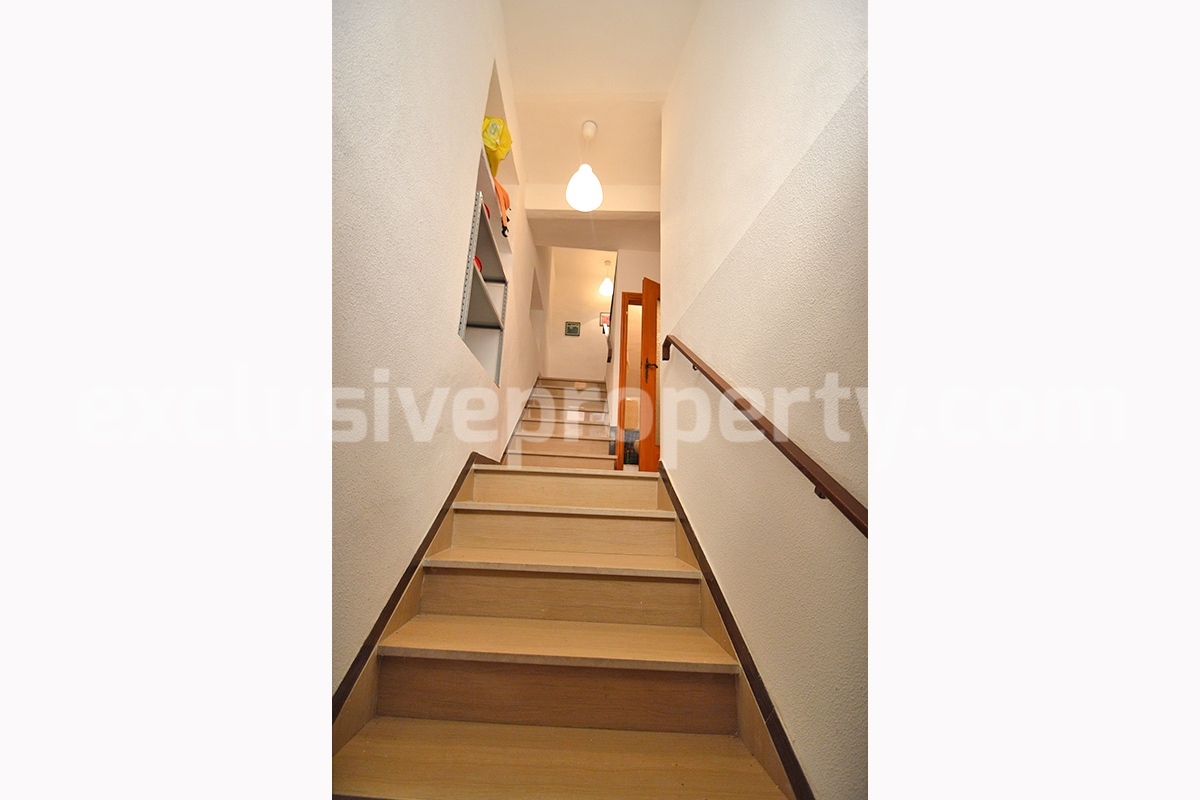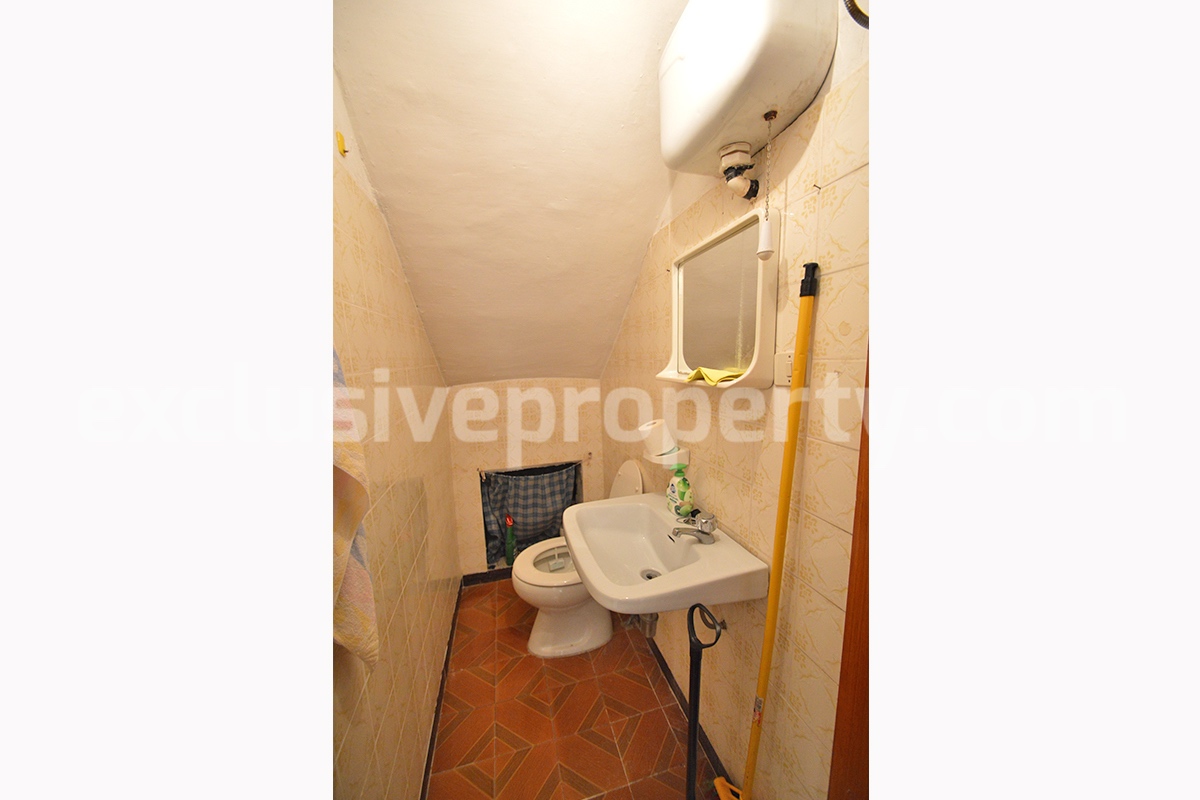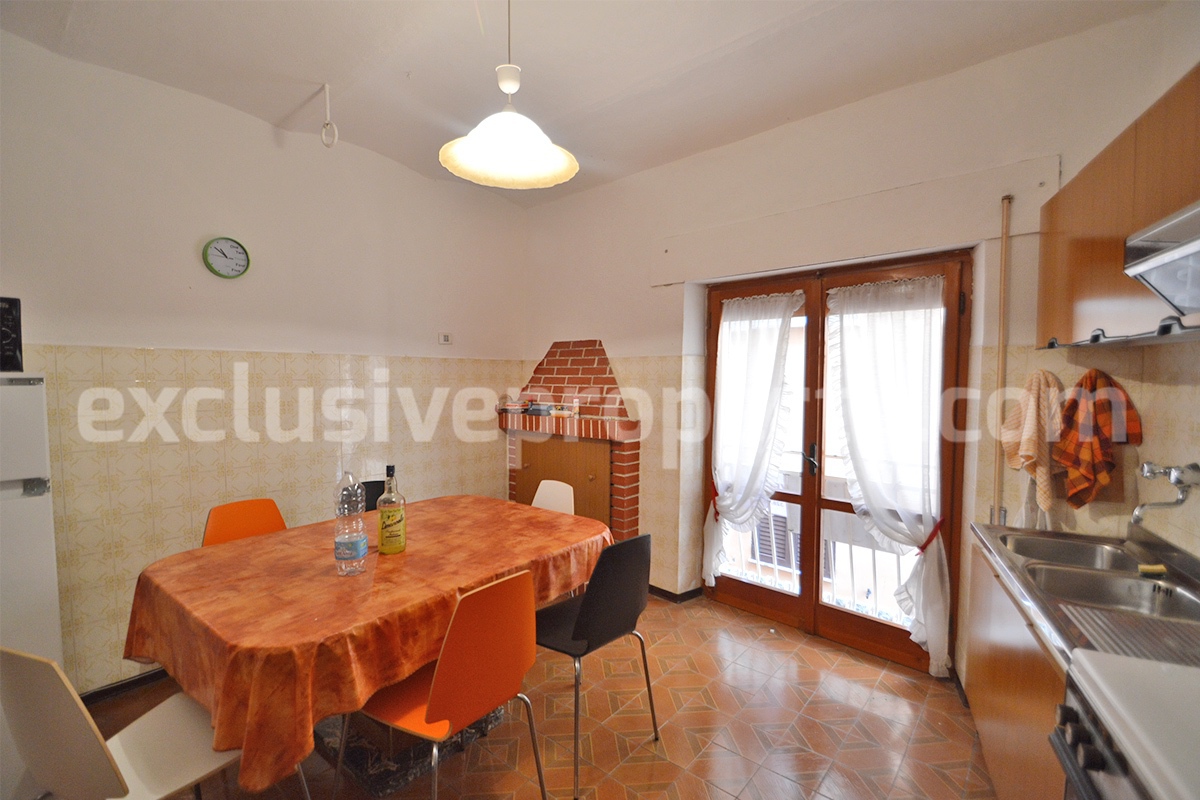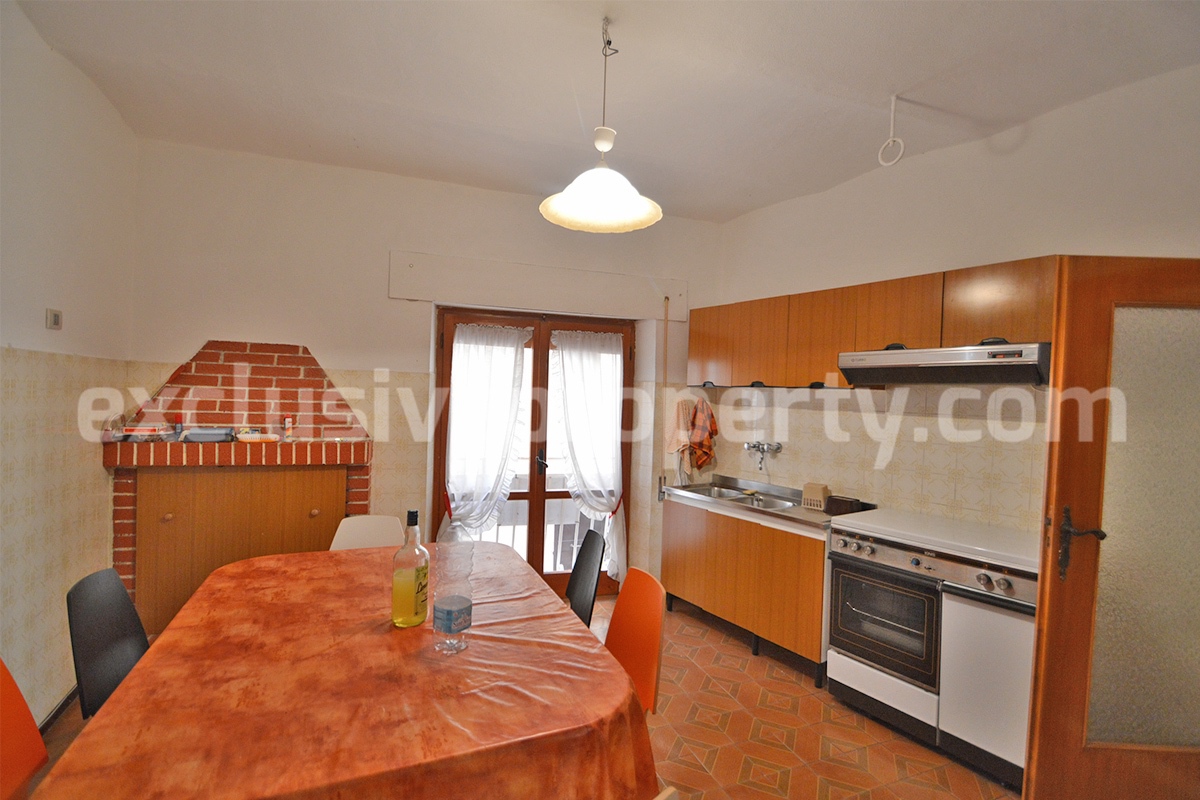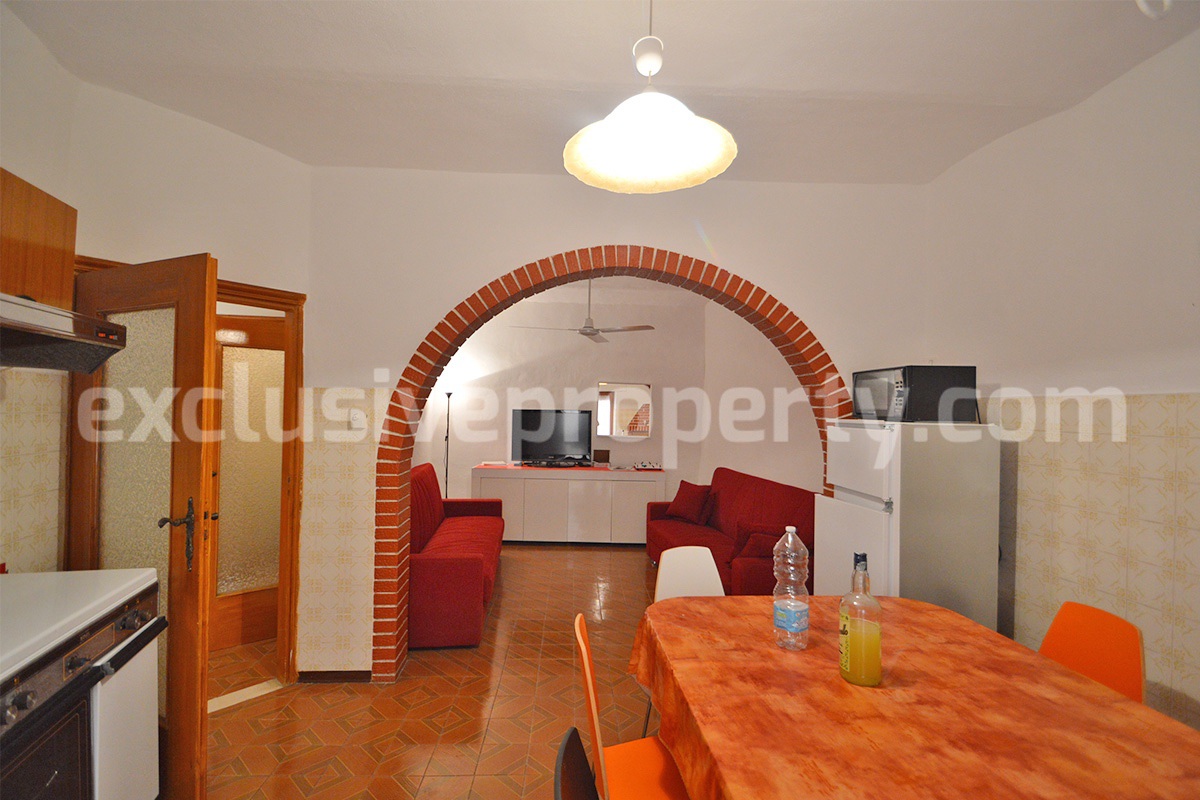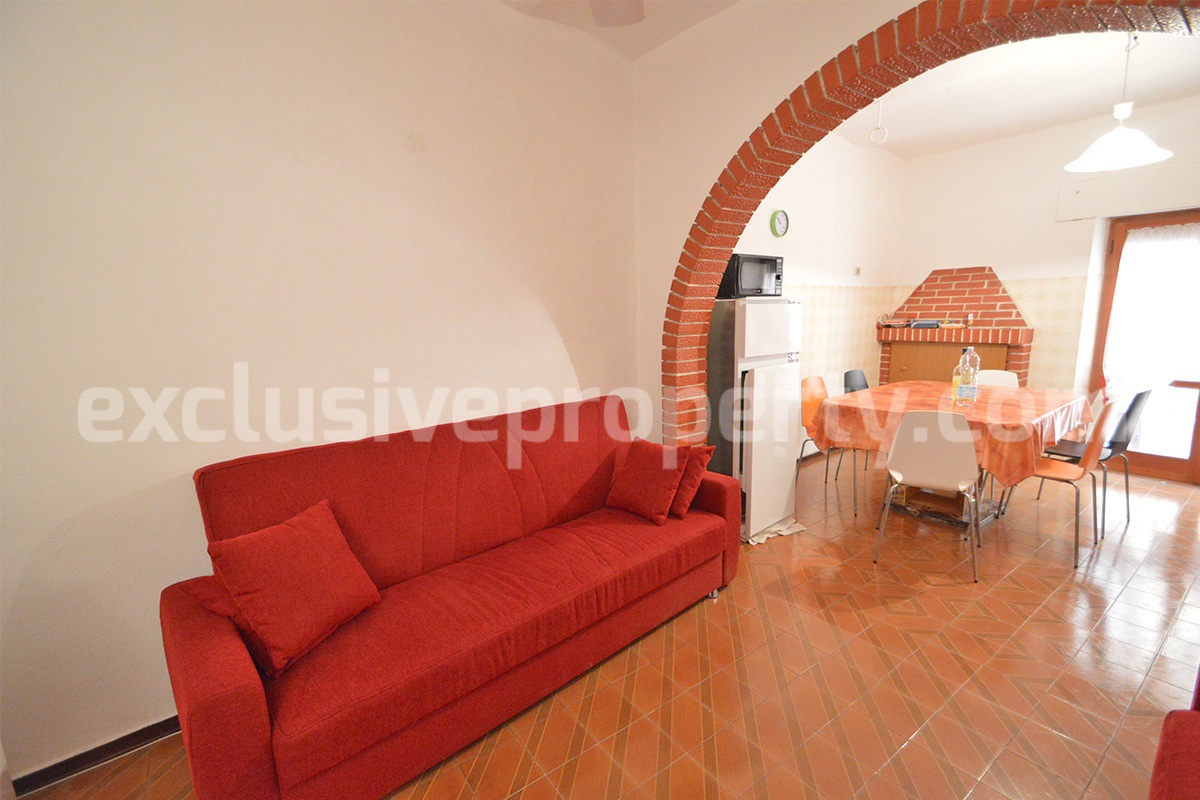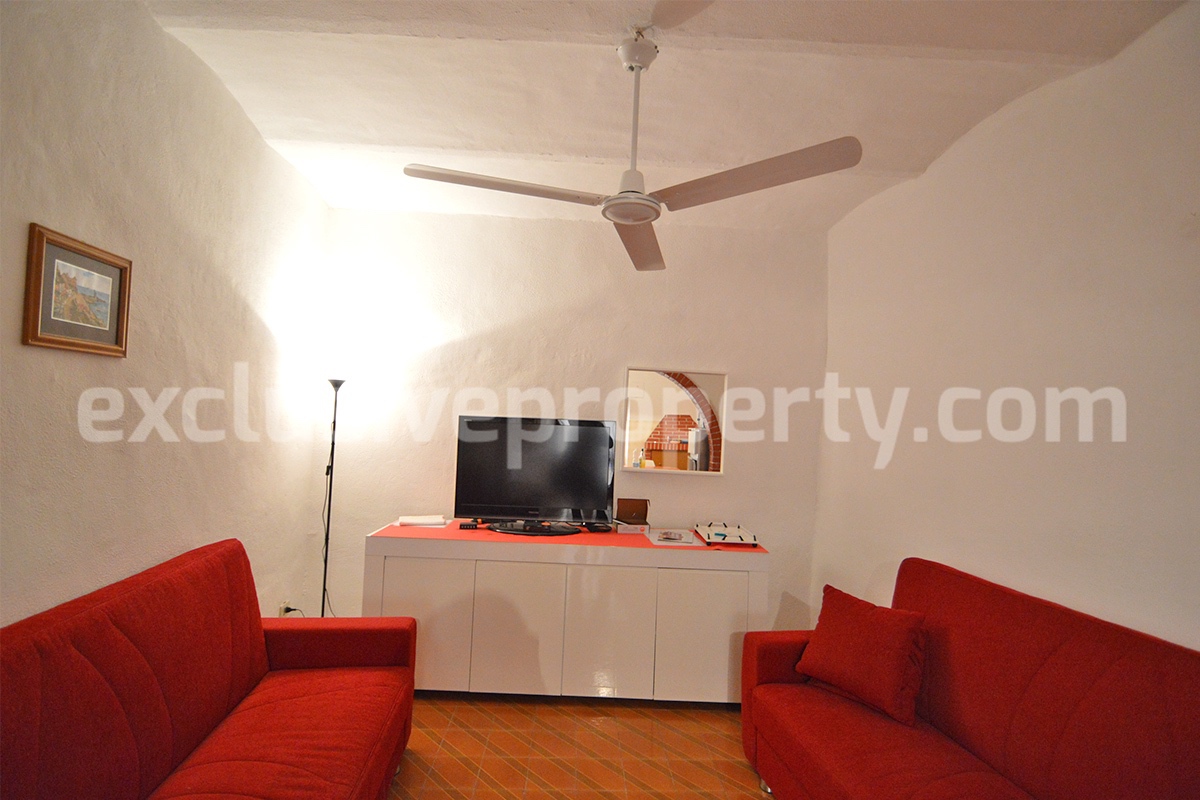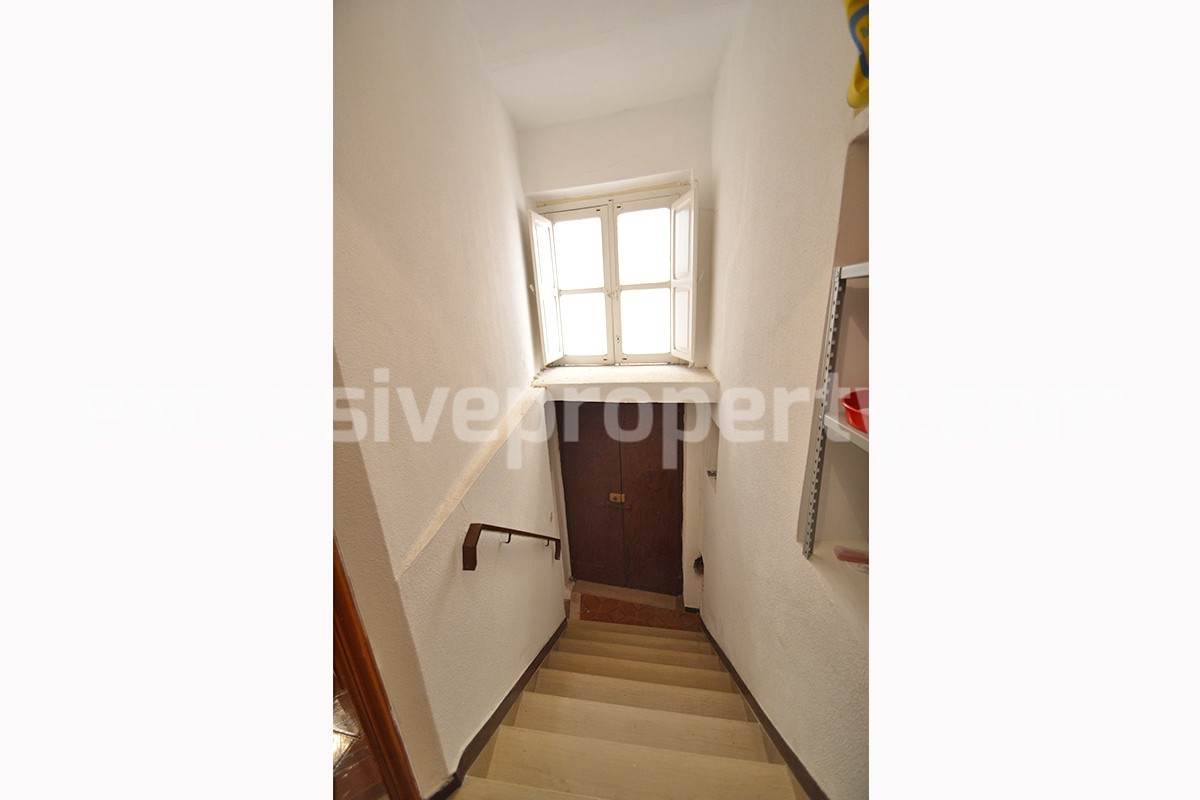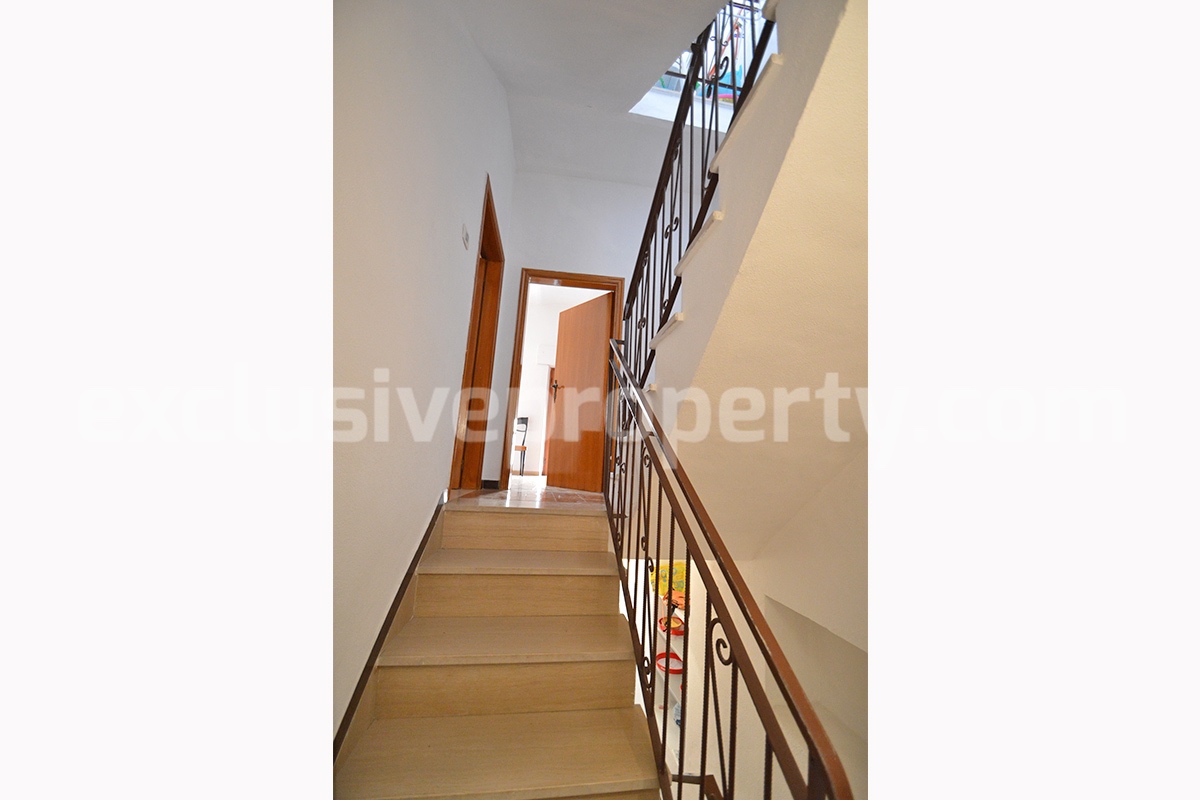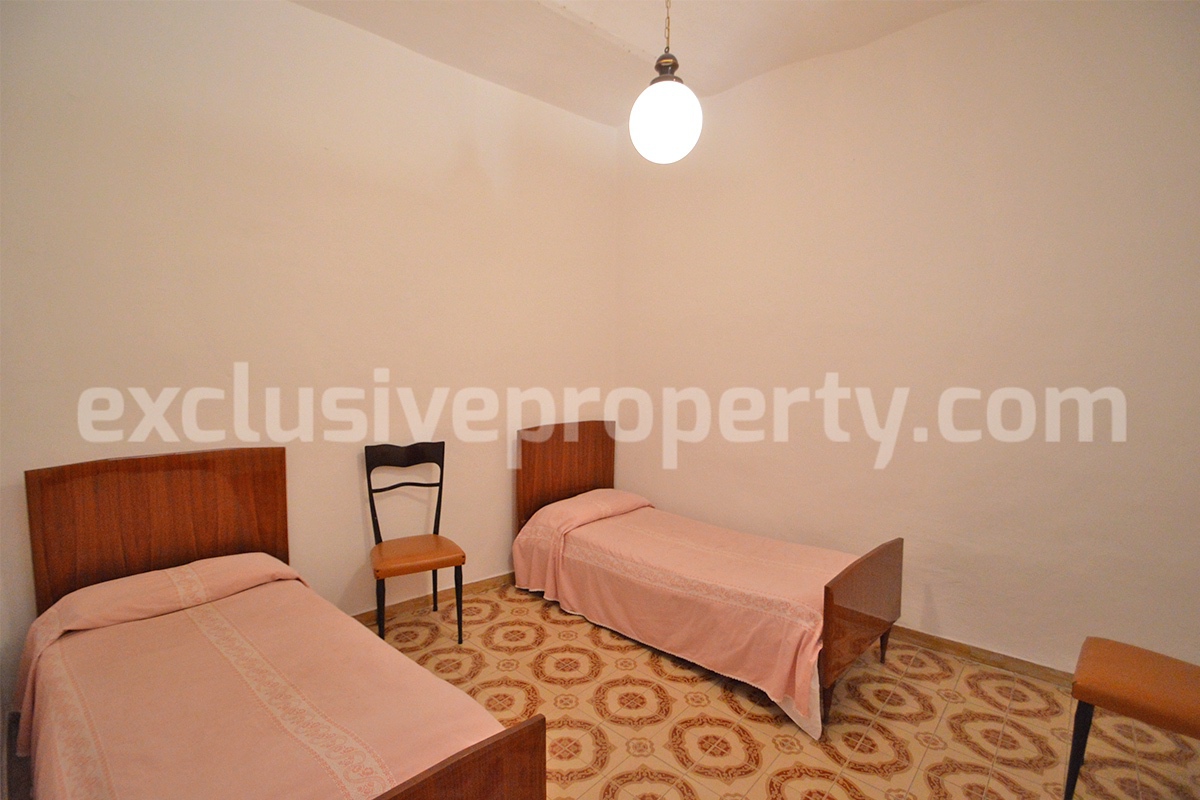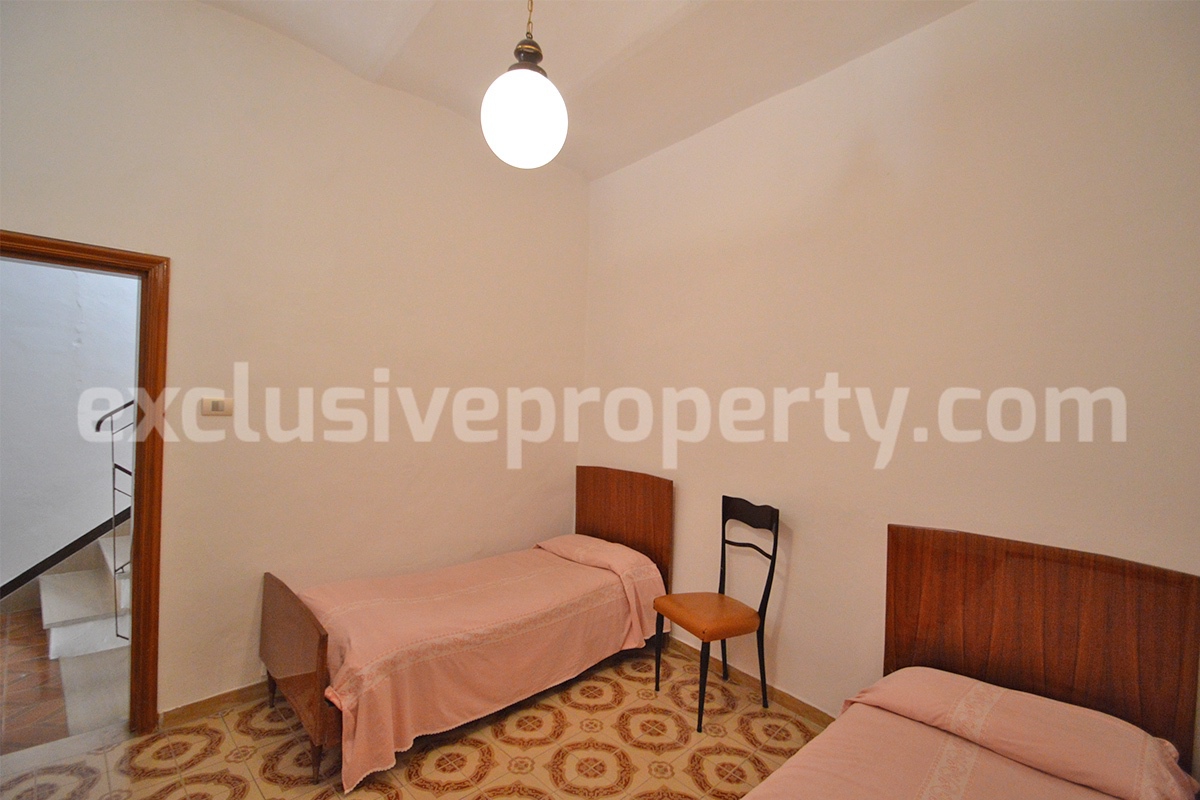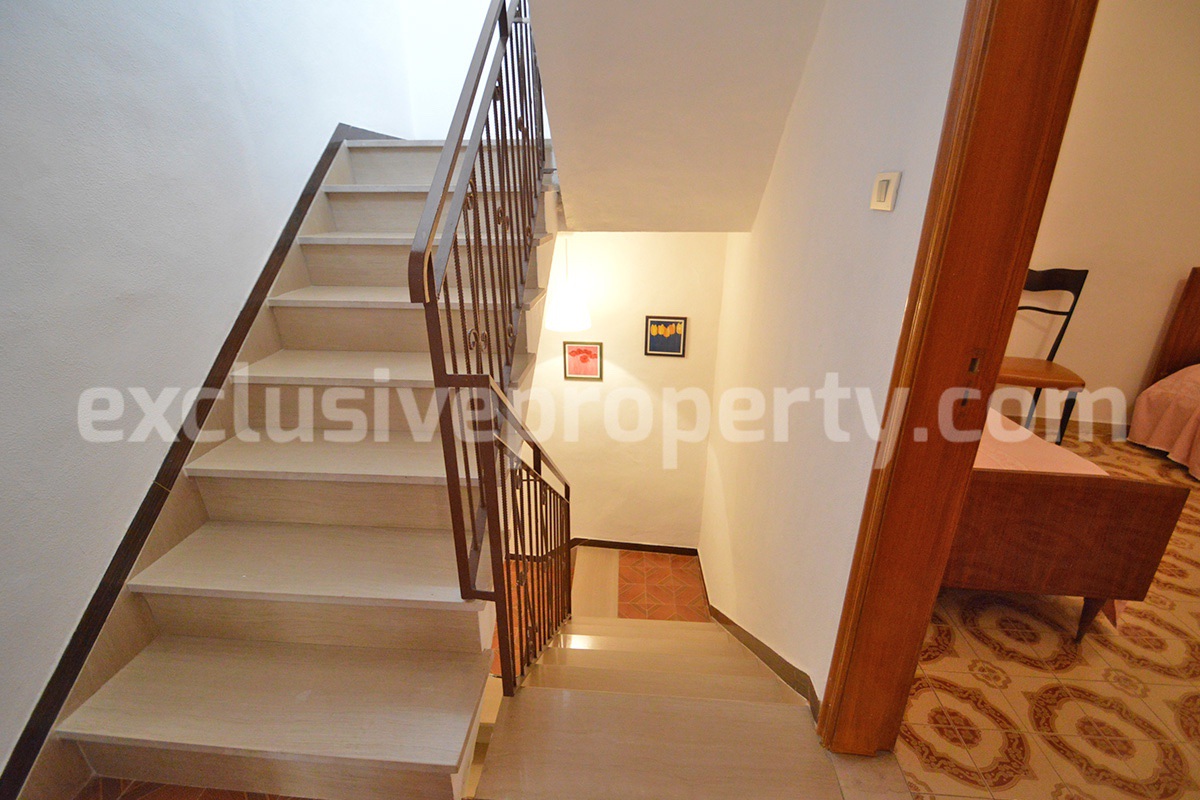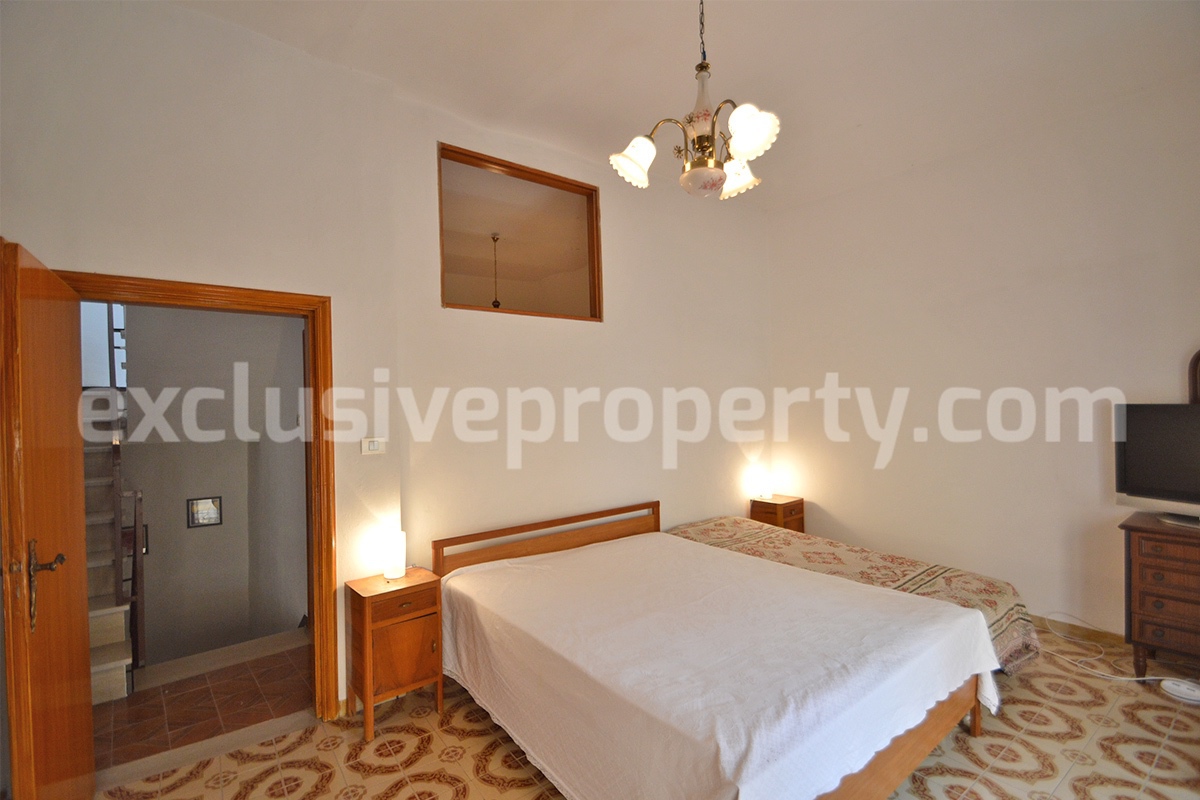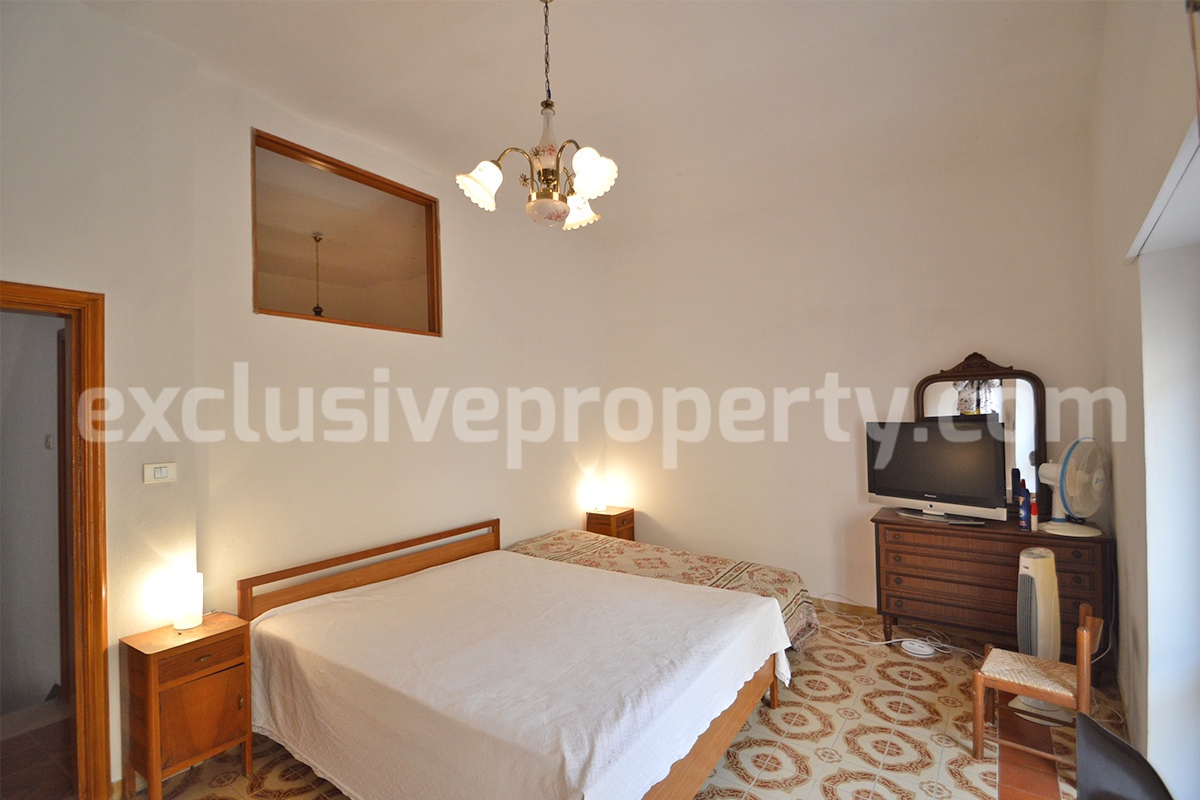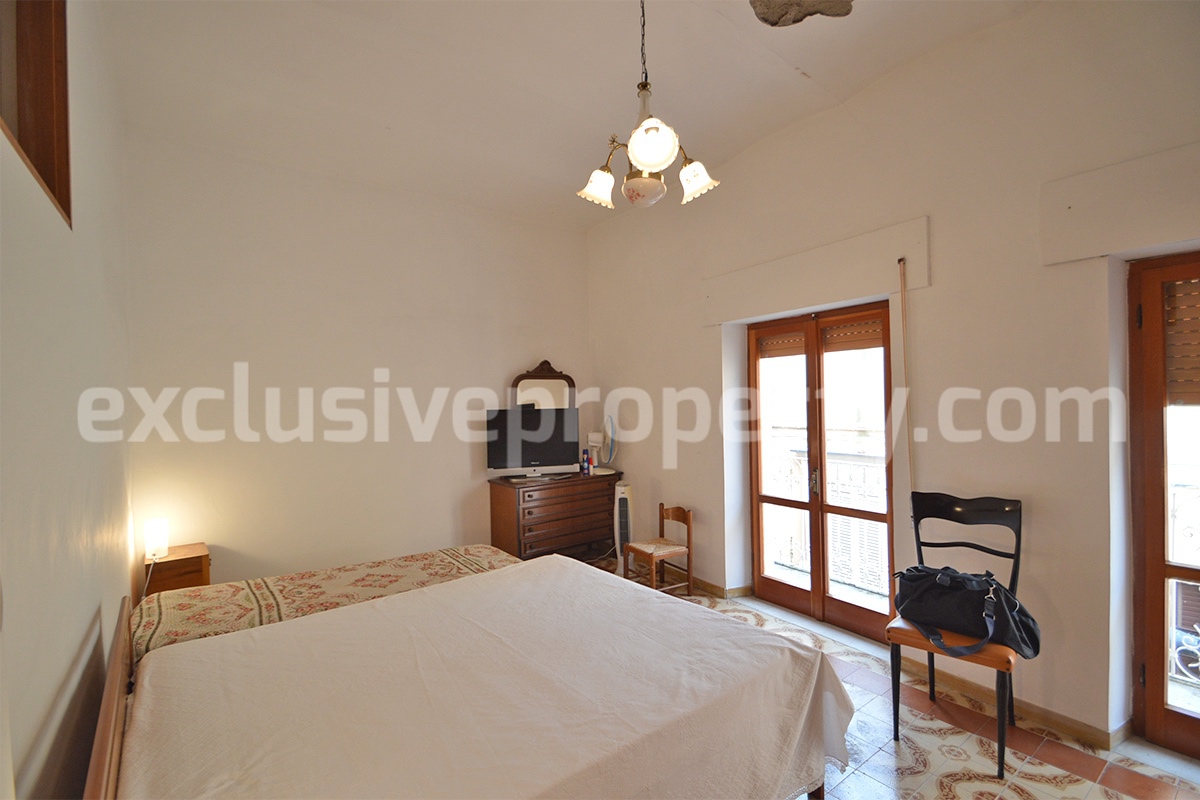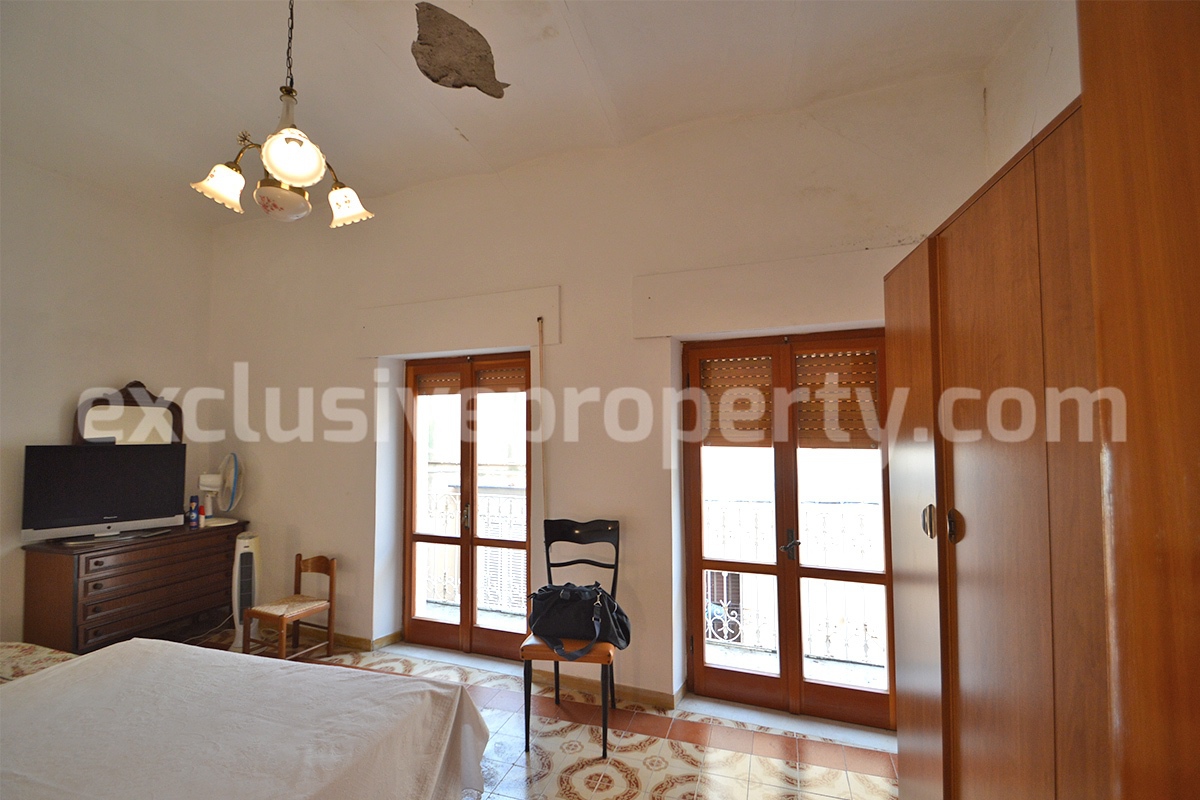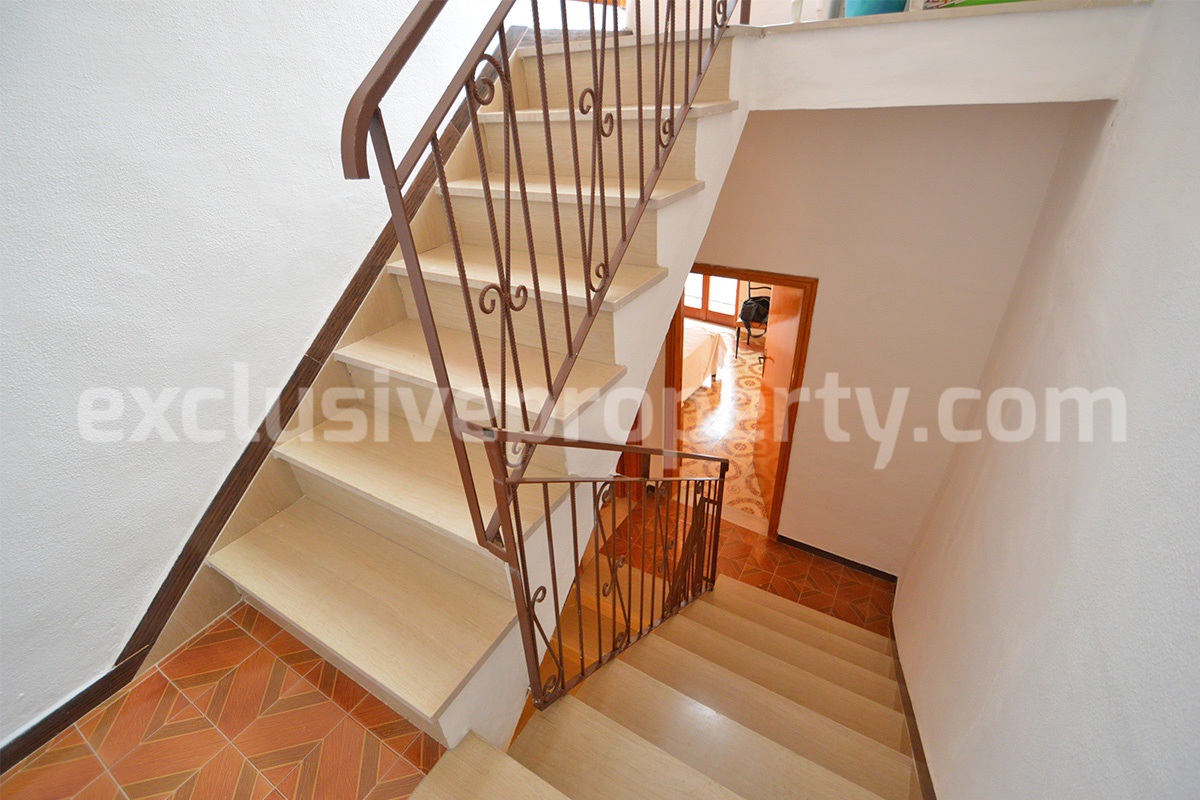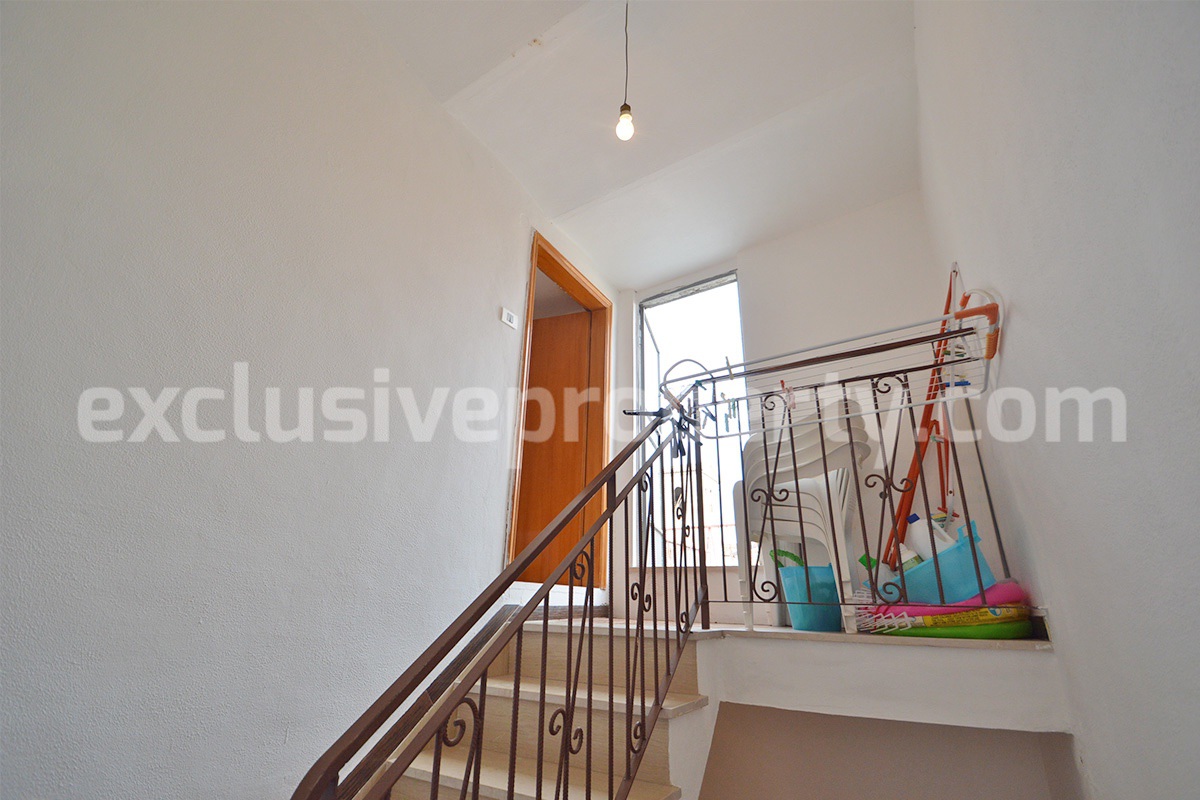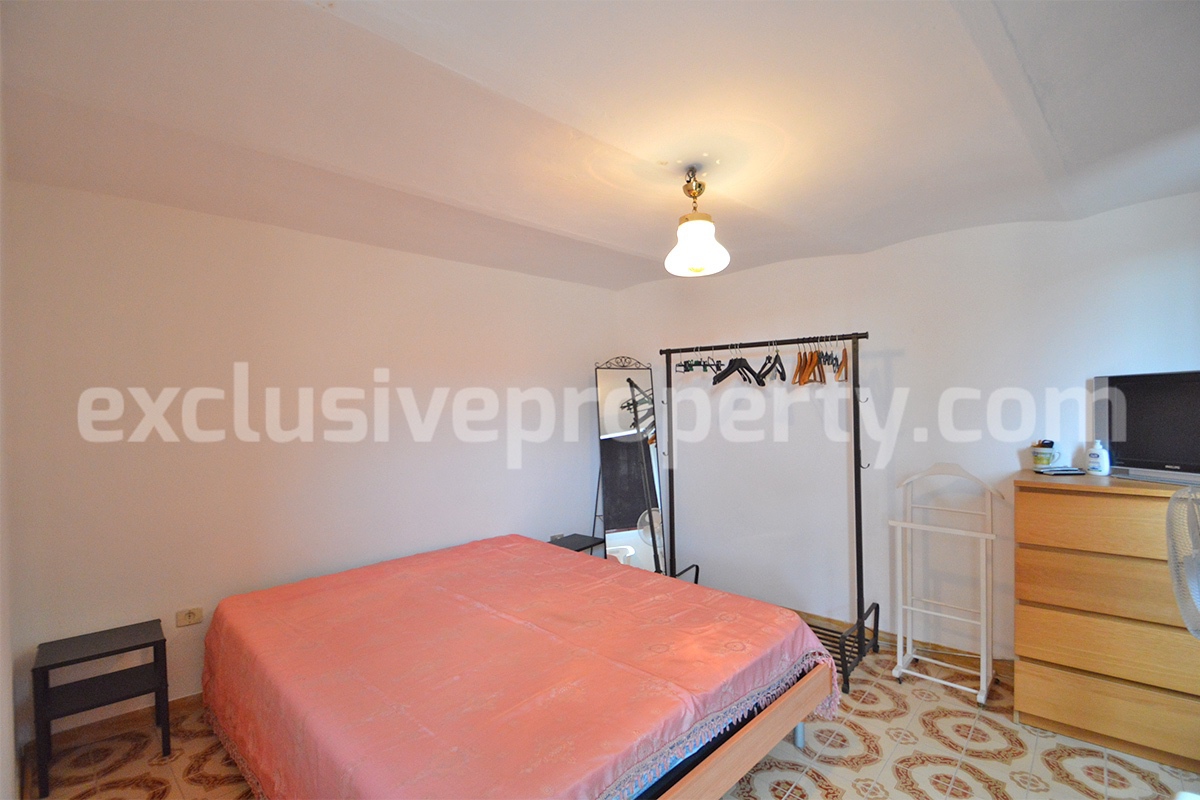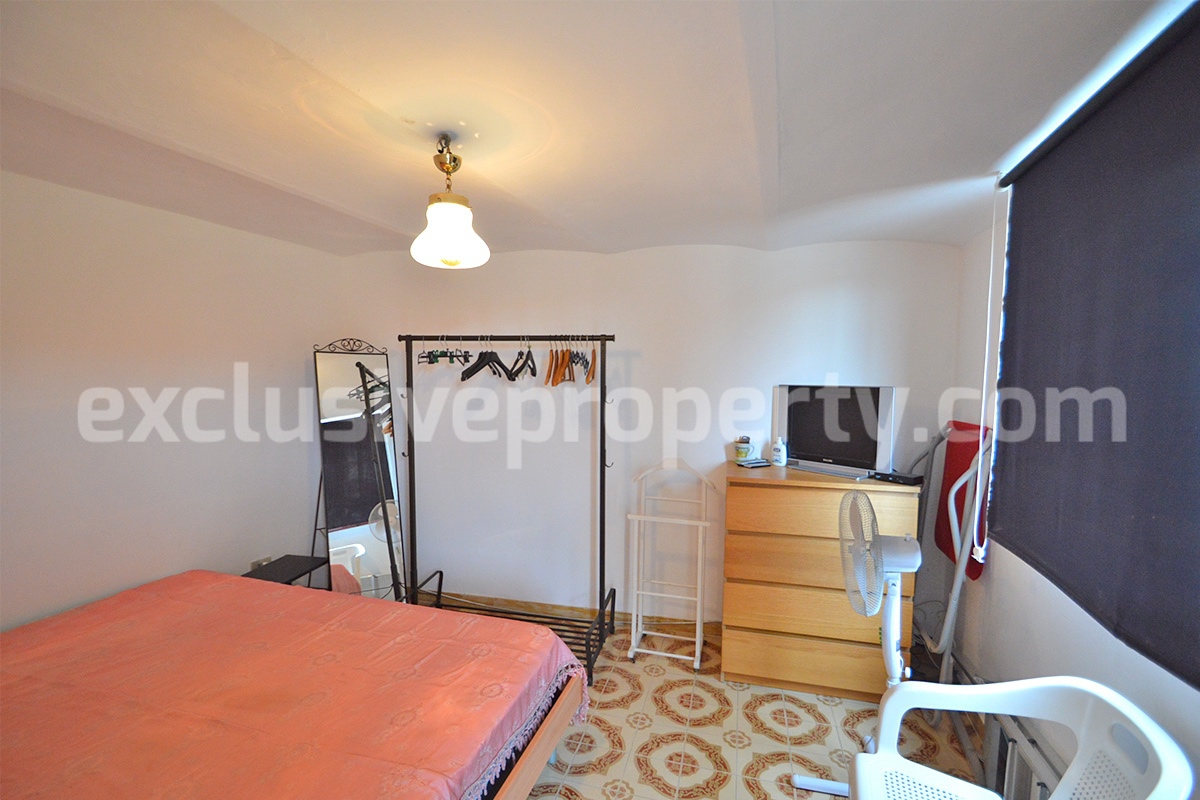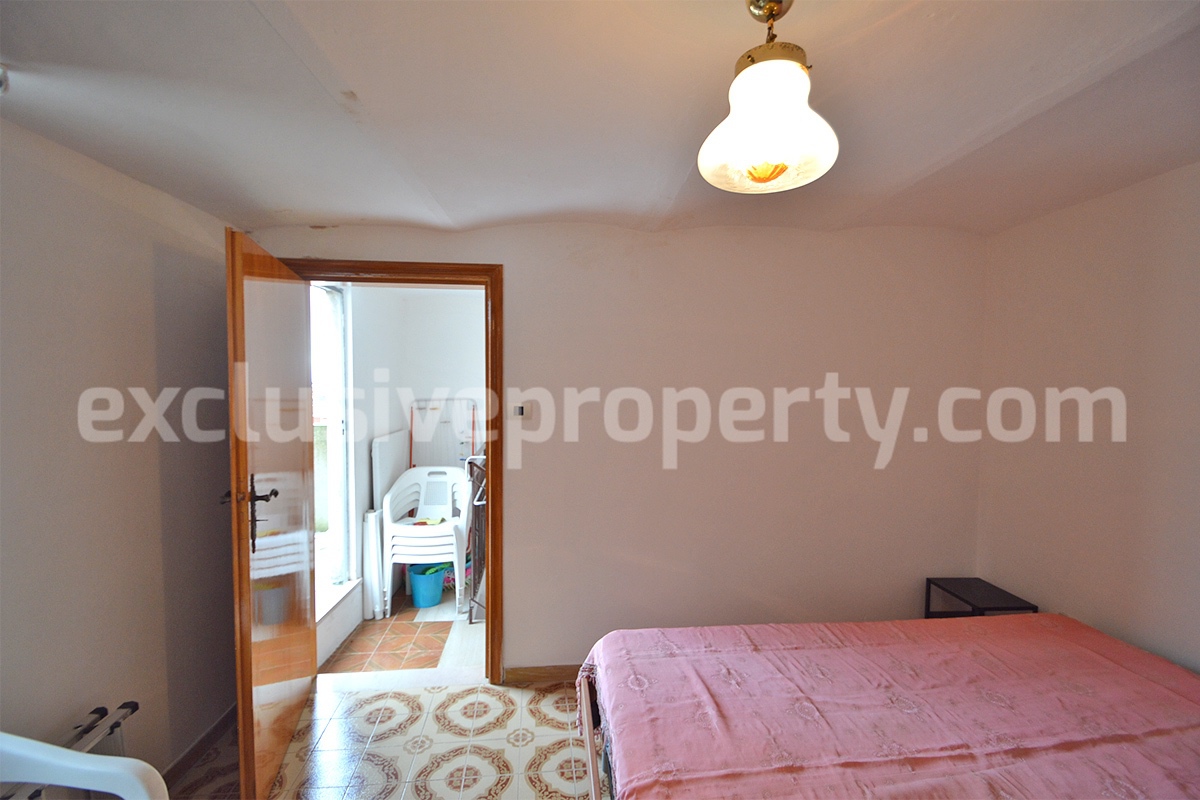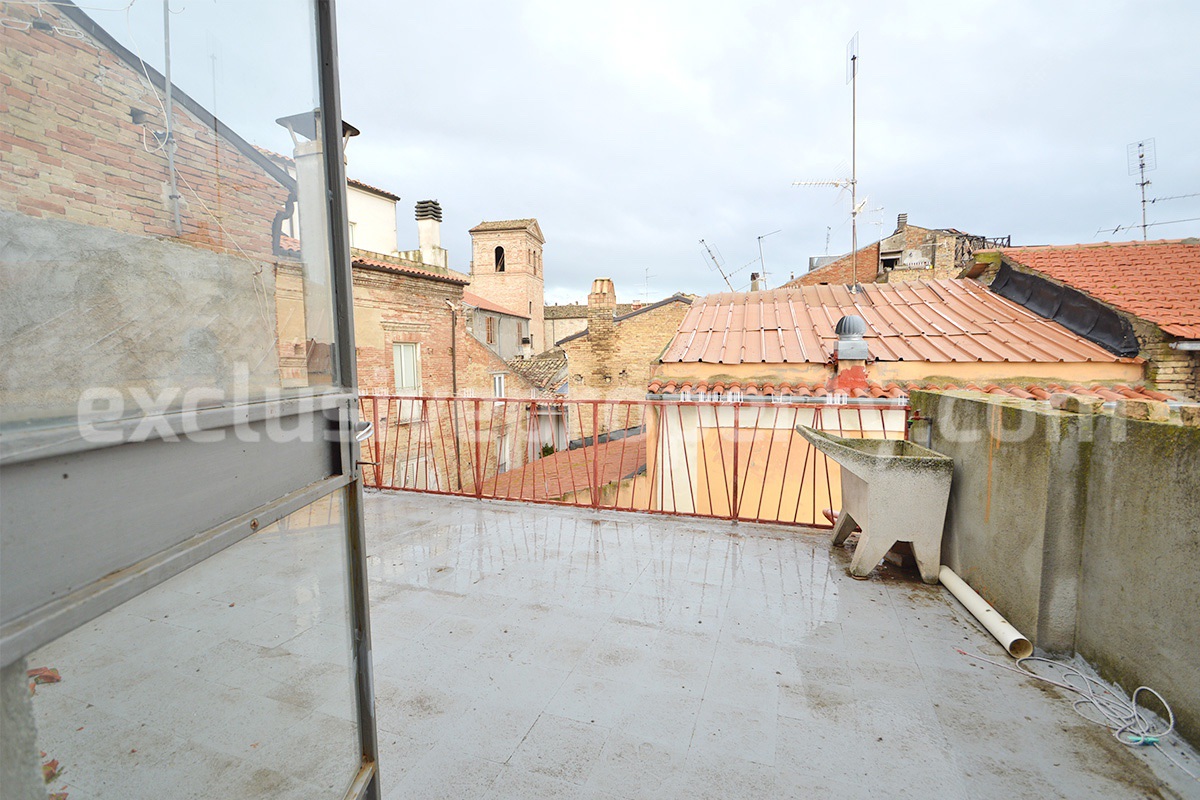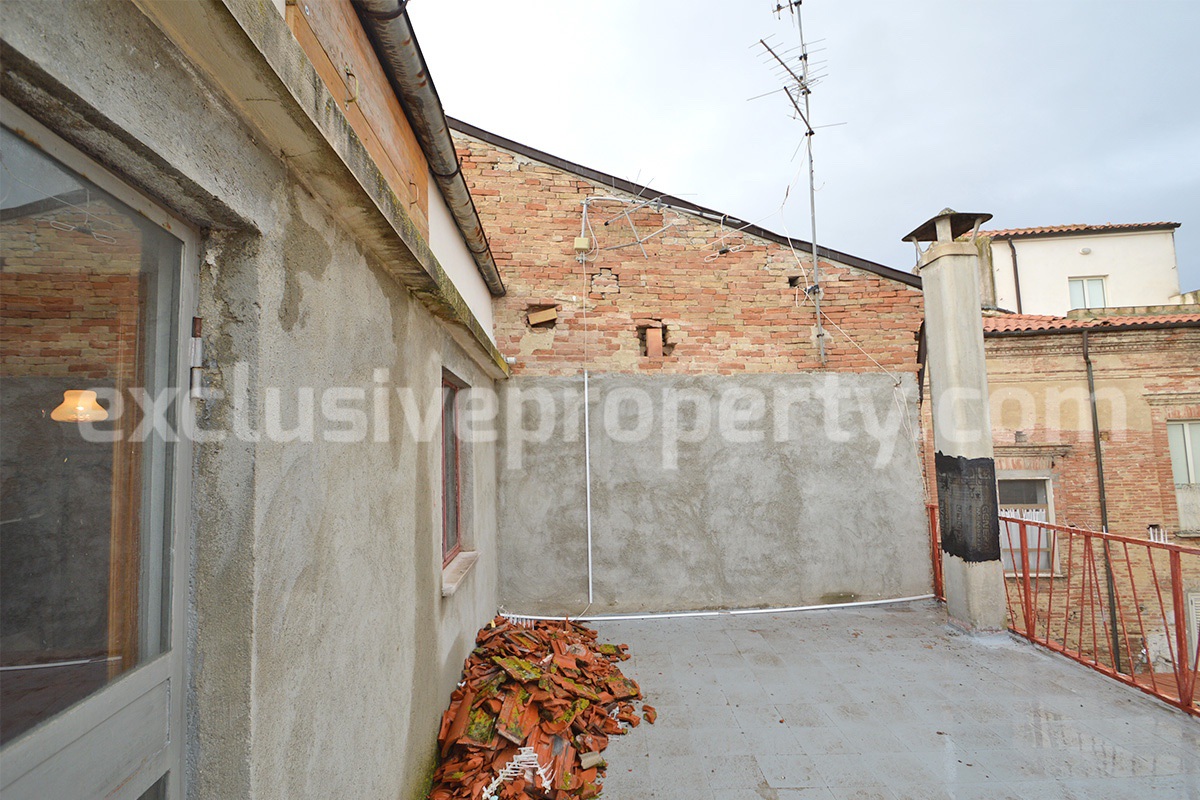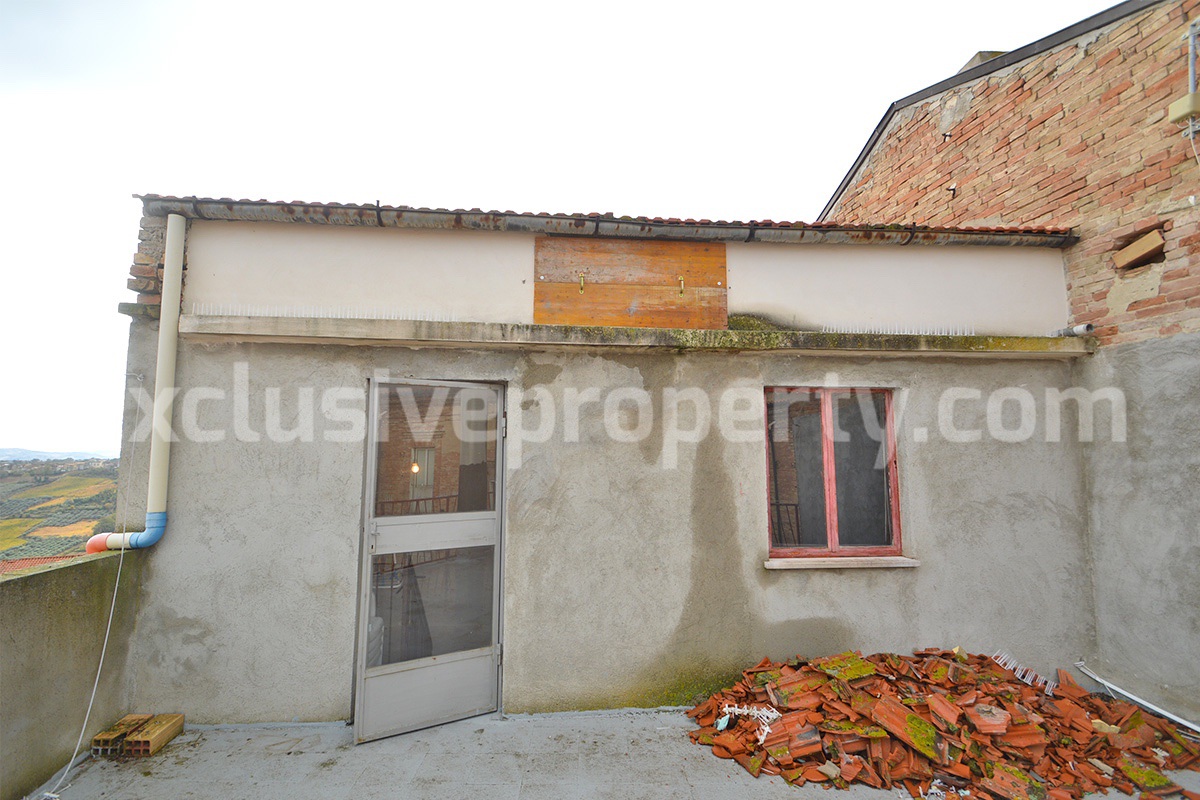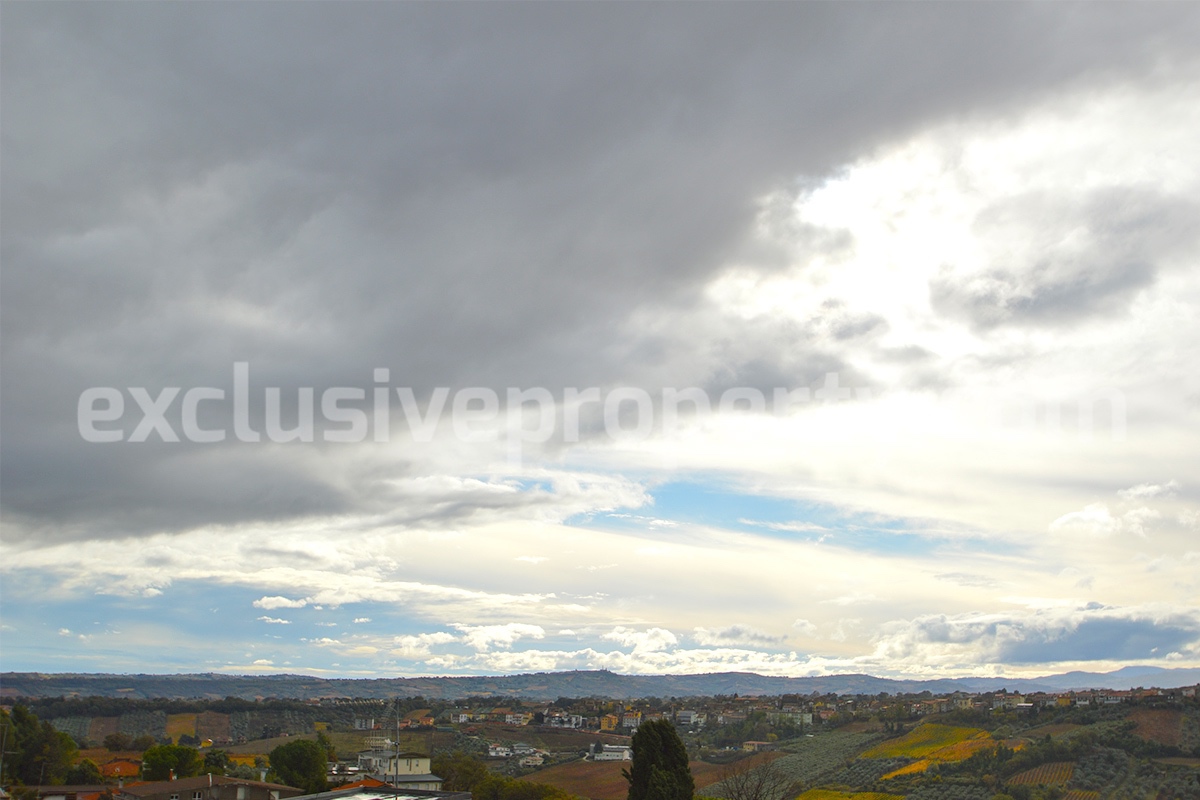At a glance
Like this property?
Call now +39 340 0624970 (english language), +39 333 2529230 (italian language) or REQUEST DETAILS for this property!
Description
Habitable town house with terrace located in the center of Casalbordino, a nice town by the sea, far from the beach just 8 km.
The house has an area of around 90 sq m plus the terrace on three floors: on the GROUND FLOOR two entrances one of each leads to the basement room (3.93 m x 4.01 m= 15.75 sq m) with fireplace, bathroom (3.19 m x 1.93 m= 6.15 sq m) with bathtub.
The ground floor is connected with the staircase.
The main entrance opens to the staircase that leads to the FIRST FLOOR: kitchen and living in one open space (3.72 m x 6.84 m = 25.44 sq m) with fireplace; toilet (0.87 m x 1.67 m = 1.45 sq m); on the SECOND FLOOR master bedroom (3.48 m x 5.33 m = 18.54 sq m) with two French windows and two balconies, second bedroom (3.24 m x 3.41 m = 11.04 sq m) without window but opening on the master bedroom to have light that grants anyway the privacy; on the THIRD FLOOR double bedroom (3.52 m x 3.24 m= 11.40 sq m) with access for the terrace (5.6 m x 3.7 m= 20.72 sq m) from where there is a glimpse of the sea.
The house has no heating system but the other UTILITIES are available: gas, electricity and water, that are still connected as the house is used as summer holiday home.
CASALBORDINO's fame, apart from its great wine, today is linked to the Sanctuary of the Madonna dei Miracoli, the region most important and frequented Marian sanctuary. However, in ancient times its territory, between the Osento and Sinello Rivers, was the heart of the Frentania, where a series of cattle-tracks formed the Pre-Roman and Roman communication network of the Abruzzo region. In fact, this area was important for Rome to link Puglia through the Via Valeria and the Adriatic sheep track. The origin of Casalbordino dates back to the IX century. Due to the always increasing influence exercised by the Monastery of Santo Stefano in Rivo Maris, the entire territory of Casalbordino experienced a period of growth and great transformations. The lands were drained, mills built and several fortified settlements and castles were erected among which there was Casalbordino, governed by Roberto Bordinus, from which the city takes its name. At the beginning of the XII century, the Monastery of Santo Stefano, devastated more than once, began to decay irreversibly.The Angevin domination instilled new life into the entire area, towards the end of the 13th century. Between the 1300 and the 1400, repeated waves of plague caused the nearby centers to be abandoned, an event that did not happen in Casalbordino, thanks to its distant position from the sheep track source of the epidemics. In the late 19th century, when feudality was abolished, a dynamic phase of expansion of the ancient medieval settlement began. The landscape changed rapidly. Forests were replaced with fields of wheat and the town we know now began to take shape, with its wide areas of cultivated wheat and vineyards, its center up on a hill, an important hub of road ramifications that connect the different areas of the territory. A well thought out and the adequate agricultural use of the fertile plateau and hinterland and a quality improvement of the landscape are some of the natural gifts of this territory: many biking or horseback riding roads and paths immersed in green pastures along the riverbed of the Osento River, in the nearby woods of Don Venanzio, or along the Sinello. Going north, instead, one can coast along the beach, where dunes of sand of rare beauty and numerous species of plants exist, rare across the entire coast. The hills are rich of centenarian olive groves and precious grape cultivations, pillars of the agricultural economy and pride of Casalbordino's inhabitants. The historic downtown, with its fortified village and the Church of Santissimo Salvatore, holds numerous noble neoclassic and baroque palaces. Along the coastal route, the ancient walls of the early Christian Basilica and the medieval monastery of Santo Stefano in Rivo Maris are still visible.
Show MoreAmenities
- Balcony
- Cellar
- Fireplace
- Terrace
Distances
- Airport: 68 km/54 min from Pescara international airport, 203 km/2 hr 45 min from Napoli airport, 296 km/3 hr 5 min from Roma airport and 244 km/2 hr 25 min from Bari airport.
- Coast: 8 km/15 min from the beach of Casalbordino, 10 km/20 min from the Nature Reserve of Punta Aderci, with its homonymous rocky promontory, protects one of the most evocative stretches of the coast, which alternates wide and sandy beaches with natural cliffs.
- Skiing resort: 107 km/1hr 28 min from the ski lifts of Passo Lanciano and 106 km/1hr 30 min from the Roccaraso/Rivisondoli ski lifts (with 24 ski lifts it has the largest number of lifts in Abruzzo).
- Train station: 9 km/14 min from the train station of Casalbordino.

